Wilhelm Schirmer | |
|---|---|
 |
August Wilhelm Ferdinand Schirmer (born 6 May 1802 in Berlin; died 8 June 1866 in Nyon) was a German landscape artist.
Wilhelm Schirmer | |
|---|---|
 |
August Wilhelm Ferdinand Schirmer (born 6 May 1802 in Berlin; died 8 June 1866 in Nyon) was a German landscape artist.
Schirmer was born in Berlin. As a youth Schirmer painted flowers in the royal porcelain factory; afterwards he became a pupil of Friedrich Wilhelm Schadow in the Berlin Academy, but his art owed most to Italy. In 1827 he went to Italy, where his sojourn extended over three years. He became a disciple of his countryman Joseph Koch, who built historic landscape on the Poussins, and is said to have caught inspiration from J. M. W. Turner. In 1831 Schirmer established himself in Berlin in a studio with scholars. From 1839 to 1865 he was professor of landscape in the academy. [1]
Schirmer's place in the history of art is distinctive. His sketches in Italy were more than transcripts of the spots; he studied nature with the purpose of composing historic and poetic landscapes. On the completion of the Berlin Museum of Antiquities came his opportunity. Upon the walls he painted classic sites and temples, and elucidated the collections by the landscape scenery with which they were historically associated. [1]
Schirmer's goal was to make his art the poetic interpretation of nature and he deemed technique secondary to conception. [1]
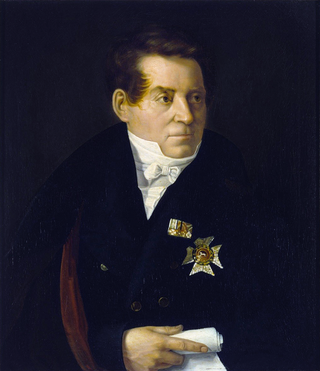
August WilhelmSchlegel, usually cited as August Schlegel, was a German Indologist, poet, translator and critic, and with his brother Friedrich Schlegel the leading influence within Jena Romanticism. His translations of Shakespeare turned the English dramatist's works into German classics. Schlegel was also the professor of Sanskrit in Continental Europe and produced a translation of the Bhagavad Gita.

Wilhelm Martin Leberecht de Wette was a German theologian and biblical scholar.

Anselm Feuerbach was a German painter. He was the leading neoclassical painter of the German 19th-century school.

Oswald Achenbach was a German painter associated with the Düsseldorf school of painting. Though little known today, during his lifetime he was counted among the most important landscape painters of Europe. Through his teaching activities, he influenced the Kunstakademie Düsseldorf. His brother, Andreas Achenbach, who was twelve years older, was also among the most important German landscape painters of the 19th century. The two brothers were humorously called "the A and O of Landscapes".
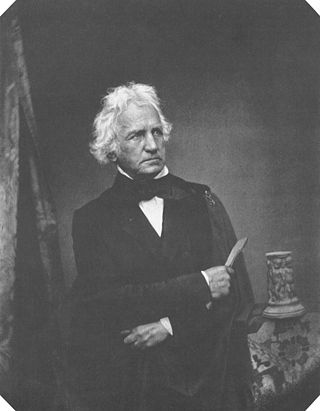
Christian Daniel Rauch was a German sculptor. He founded the Berlin school of sculpture, and was the foremost German sculptor of the 19th century.
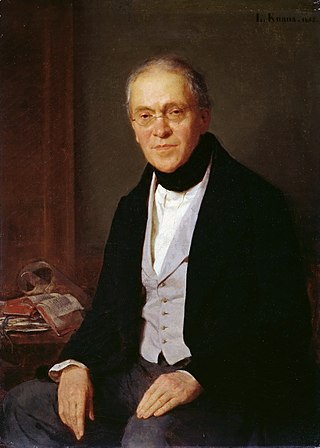
Gustav Friedrich Waagen was a German art historian. His opinions were greatly respected in England, where he was invited to give evidence before the royal commission inquiring into the condition and future of the National Gallery, for which he was a leading candidate to become director. He died on a visit to Copenhagen in 1868.

Julius Schnorr von Carolsfeld was a German painter, chiefly of Biblical subjects. As a young man he associated with the painters of the Nazarene movement who revived the florid Renaissance style in religious art. He is remembered for his extensive Picture Bible, and his designs for stained glass windows in cathedrals.
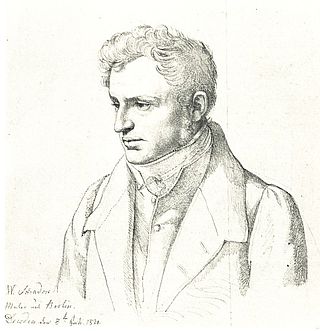
Friedrich Wilhelm von Schadow was a German Romantic painter.

Johann Wilhelm Schirmer was a German landscape artist born in Jülich, within the Prussian Duchy of Jülich.

Wilhelm Friedrich Wieprecht was a German musical conductor, composer and inventor.

Anton Alexander von Werner was a German painter known for his history paintings of notable political and military events in the Kingdom of Prussia.

Moriz Carrière was a German philosopher and historian.

Wilhelm Camphausen, was a German painter who specialized in historical and battle scenes.
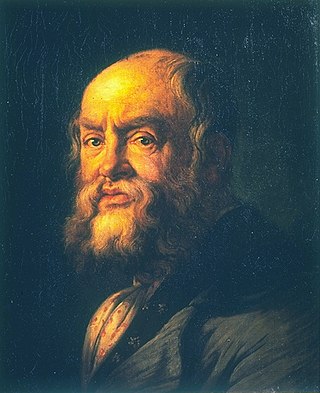
Giovanni Bonaventura Genelli was an Italian painter.

Hans Fredrik Gude was a Norwegian romanticist painter and is considered along with Johan Christian Dahl to be one of Norway's foremost landscape painters. He has been called a mainstay of Norwegian National Romanticism. He is associated with the Düsseldorf school of painting.

Karl Friedrich Lessing was a German historical and landscape painter, grandnephew of Gotthold Ephraim Lessing and one of the main exponents of the Düsseldorf school of painting.

Karl Wilhelm Göttling was a German philologist and classical scholar.

Ferdinand Keller, or von Keller was a German genre and history painter.
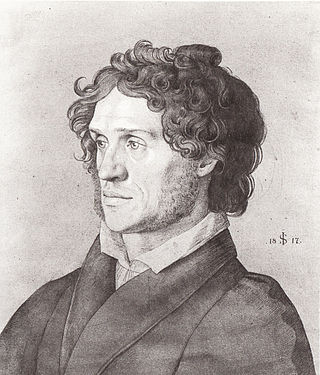
Johann Heinrich Ferdinand Olivier (1785–1841) was a German painter associated with the Nazarene movement.

Ferdinand Konrad Bellermann was a German painter and naturalist, who specialized in scenes of Venezuela.